Turnip, or turnip, has a unique composition, thanks to which it not only saturates, but also heals the body. The potato, which replaced this root crop on the table of the Slavic and Scandinavian peoples, is far from it by its healing properties. Some feed varieties of turnip have a bitterish flavor. Improper cultivation also affects the taste of the root crops described.
Material Content:
Turnip - what is this plant
Turnip belongs to the Cruciferous or Cabbage family. This is a close relative of turnips. Usually it is grown for livestock feed, but in addition to fodder varieties, there are also tasty edible varieties. Today, turnips are known mainly by rural residents who keep livestock.
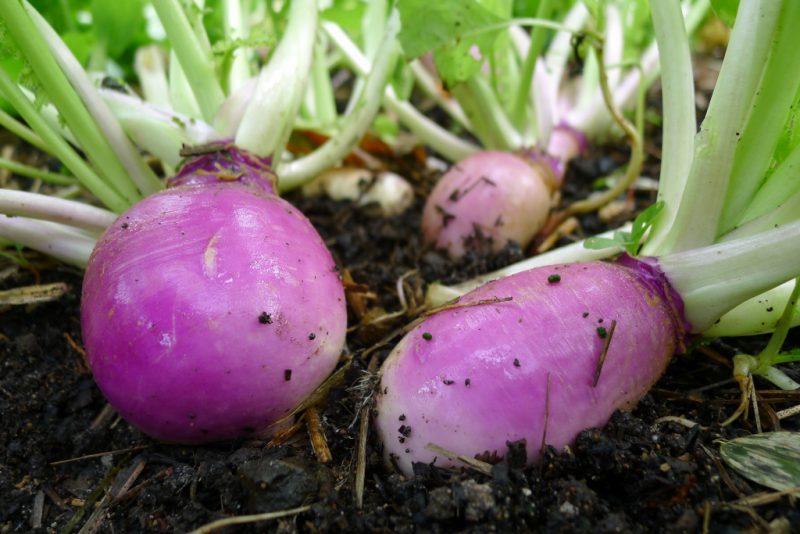
In ancient times, turnip was one of the main food products. It was grown by Scandinavian tribes since the Bronze Age. The root crop was popular in Egypt, Greece, Rome, where in nutritional value it was equated to bread.
Only with the advent of potatoes did interest in turnips begin to gradually disappear, and nutritious root crops began to be used primarily for livestock feed.
How does feed turnip look and where does it grow?
Turnip is a two-year plant. In the 1st year, roundish or oblong root crops of various colors grow - lilac, yellowish, almost white. Size - from small, like a radish, to a huge one - with a ten-liter bucket. Turnip seeds ripen in elongated pods, yellow flowers. Leaves of fodder varieties are pubescent, and in lettuce they are smooth.
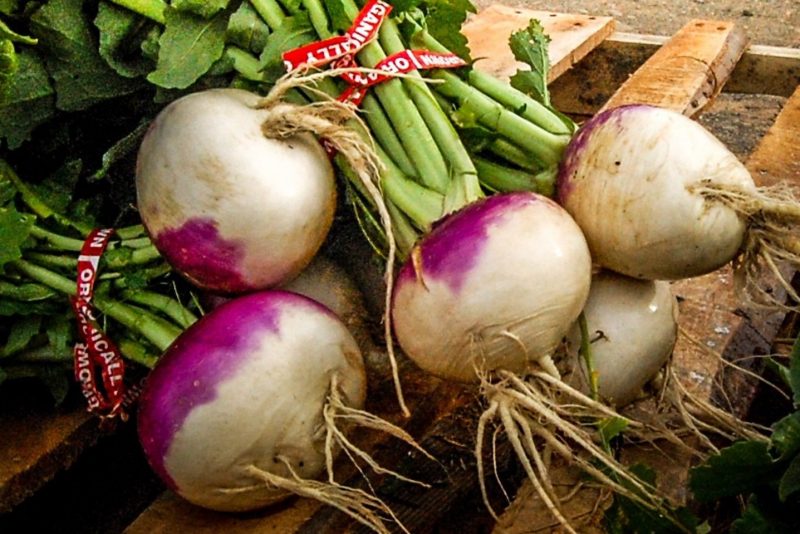
This vegetable is also called fodder turnip.
Most of the fields with this crop today are in Germany. Root crops are also grown in our country, where the turnips Ostersundomsky and Nabo became the most popular varieties.
The benefits of turnip for the human body
Turnip is good for health due to its essential oils, organic acids and flavonoids. This juicy root crop is 90% water, and therefore it is low-calorie - 100 g of the product is about 20 kcal. It also has a lot of vitamin C, calcium and vitamin A.
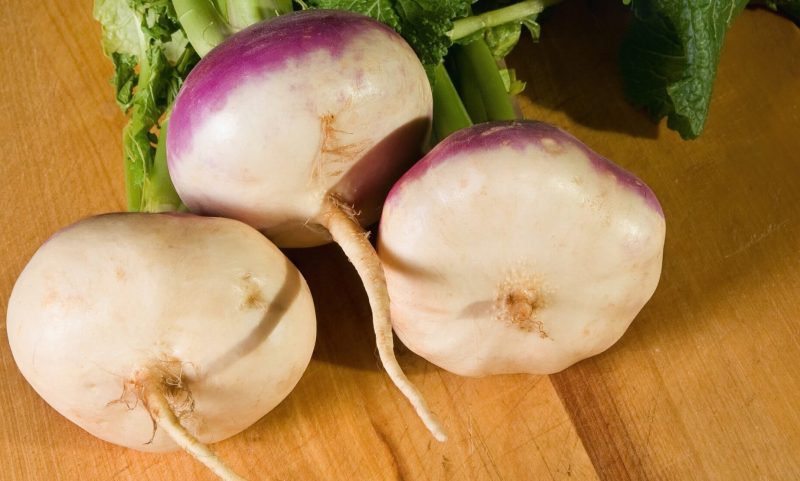
- The use of turnip in food improves the blood composition - the level of sugar and “bad” cholesterol decreases, hemoglobin rises.
- The potassium compounds included in the plant normalize the water-salt balance in the body, help to remove excess fluid, strengthen the walls of blood vessels.
- The root crop has a beneficial effect on the condition of the heart, bones, and the genitourinary system.
Features of growing turnips
Growing turnip fodder is simple, like radish and radish.
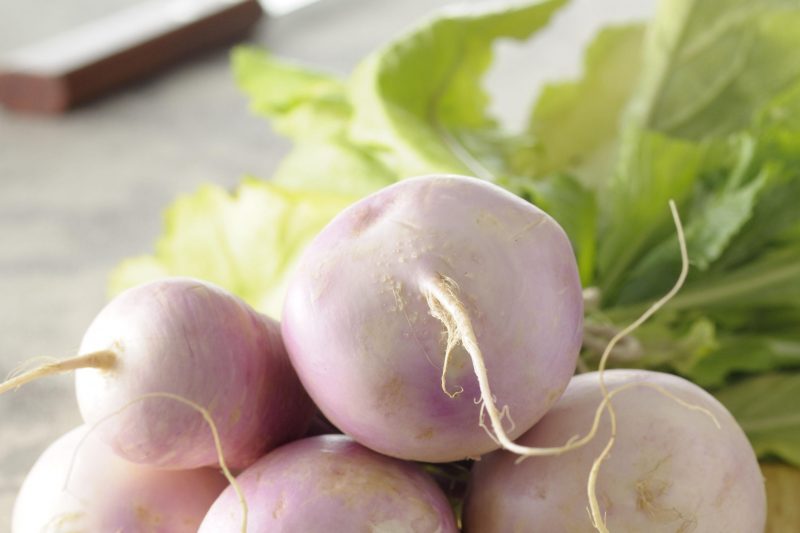
- It grows well on sod-podzolic sandy loamy and loamy soil.
- It is better to plant it on a site where plants from the Cabbage family did not grow before.
- Feed turnips need loose soil with good drainage, which contains essential nutrients.
- He does not like turnips of strong drying of the soil, in sandy land that does not hold moisture, root crops grow hard, unfit for food.
Before planting, the seeds can be lowered for 20 minutes in hot water (with temperatures up to 50 ° C), and then for 3 minutes in cold water. Then they need to be dried and mixed with sand or ash.
You can not make manure before planting - root crops will grow branched, ugly.
For the first time, feed turnips are sown in spring - in late April - early May. Once again, it can be sown in late June - early July to obtain seeds and winter storage. Summer sowing is done 80 days before the onset of steady frost.
- Seeds are planted to a depth of about 2 cm.
- After sowing, the plot is rolled up and mulched with peat.
- First watered often, then reduce watering to 1-2 times a week.
- 10-15 days after emergence, the turnip is thinned out and the first top dressing is applied. Fertilize the second time in about a month.
- Harvest ripens approximately 2 months after sowing seeds.
How to care for turnips
The culture is unpretentious in cultivation, but without care it is difficult to get a good harvest. It is important to thin out crops in time so that small root crops do not grow. Belated thinning will reduce the quality and quantity of the crop, because the plants will oppress each other.
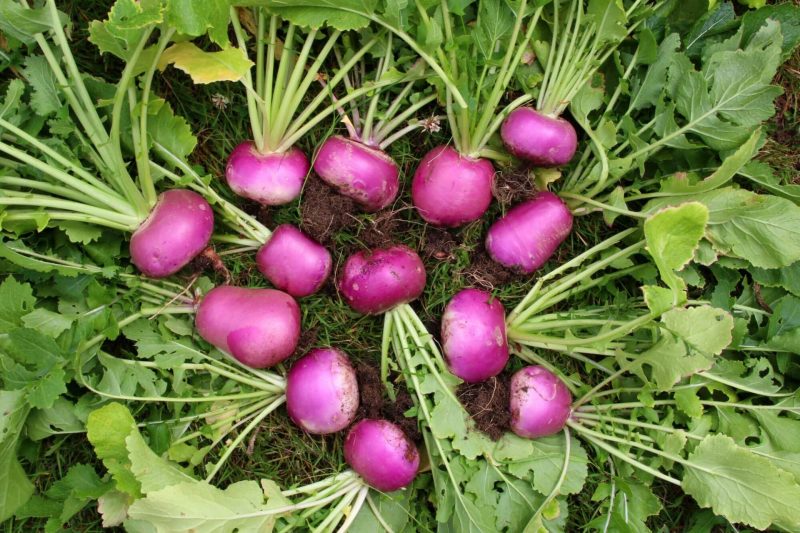
- Feed turnip with phosphorus-potassium mineral fertilizers. A good top dressing is wood ash. Great taste is given to root crops by sodium fertilizers. Nitrogen dressing can not be abused, turnip grows unsweetened and poorly stored in winter.
- So that the root crops do not crack and grow tasty, they need to be regularly watered. Plants are watered after watering and applying liquid fertilizers to prevent them from overheating. The soil between the rows is loosened so that the turnip does not bloom early.
- To control pests, plants are pollinated with deterrents - ash, tobacco dust, mustard, pepper. To combat cruciferous fleas, turnips are sprayed with infusion of garlic, tobacco or celandine. Such drugs are better than chemicals, since root crops will not accumulate harmful substances.
It is interesting:what is rutabaga
Fields of application of feed turnips
The turnip crop is well stored all winter in a mixture of sand and ash at a temperature of + 5 ° C. Tasty varieties are used to make salads, stew, bake. Raw turnip dishes are considered the most useful, they contain a daily dose of vitamins A and C, as well as trace elements necessary for the body.
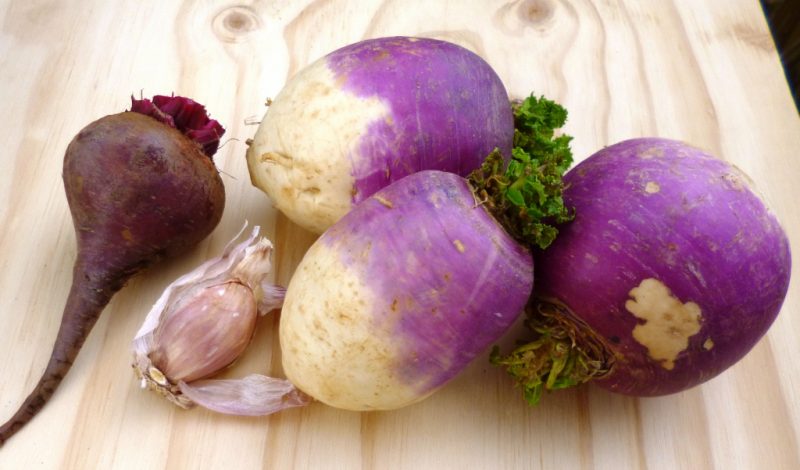
To make a turnip salad, you need the following products:
- turnip - 1 pc.;
- carrots - 1 pc.;
- oil and salt to taste.
Cooking:
- Grind carrots and turnips.
- Season with salt and oil.
Instead of carrots, you can add other vegetables, hard cheese, a boiled egg with dill and season with mayonnaise.
To obtain winter greens, turnip root vegetables are planted tightly in boxes with soil or peat and placed in a warm dark room. Over time, almost white shoots grow, tender and nutritious, edible.
A close relative of turnip rutabaga, which contains a lot of calcium, is used not only for food purposes, but also for the treatment of patients suffering from softening of bone tissue. Medicinal drugs are also prepared from turnip, their recipes have long been used by traditional medicine. With the help of root crops, scurvy, colds, insomnia and anemia are treated. They also use it as a healing agent for treating wounds.












